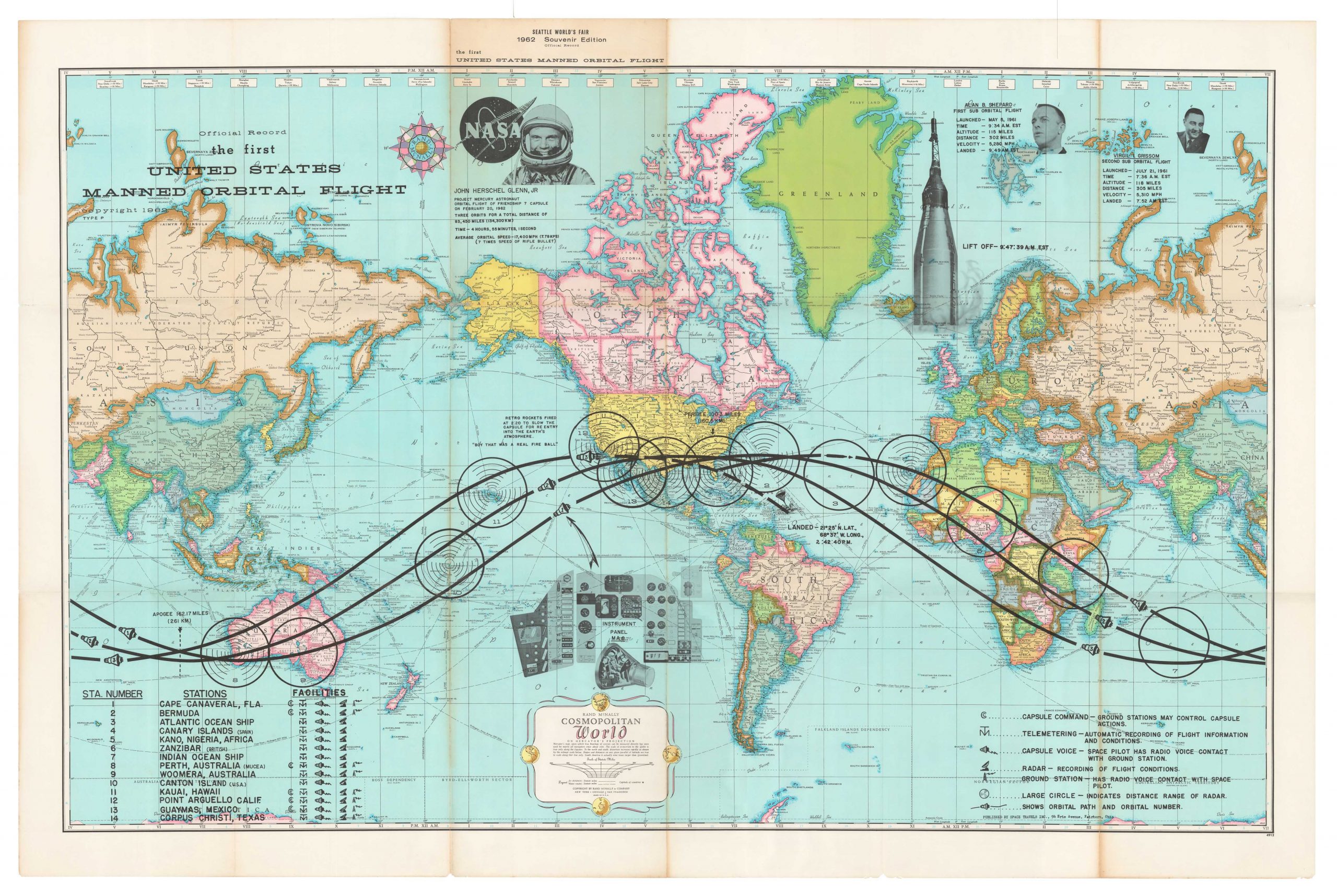Fuller’s Dymaxion Globe of Spaceship Earth: the most accurate and most revolutionary projection of the world to date.
The spaceship Earth Dymaxion globe.
Out of stock
Description
This is the Dymaxion Map or Globe, also known as the Fuller Projection. It was disclosed to the public in the mid-1950s after its compiler, R. Buckminster Fuller, had spent decades designing a two-dimensional representation of the Earth that did not compromise spatial integrity through the distortion of landmasses. The result was a wholly unique projection, which showed us the Earth in an entirely new way.
In addition to avoiding the distortion of landmasses seen in other projections, this is the only flat depiction of our planet showing the true entirety of the Earth’s surface. Moreover, due to the nature of the projection and its composition, the world’s landmasses are depicted as a single coherent island surrounded by a single coherent ocean. This map has no splitting of land masses into continents or hemispheres. Instead, Fuller’s Dymaxion Map represents the Earth as a single coherent entity. Upon its original publication in 1954, Fuller noted that he had spent decades trying to develop a “satisfactory deck plan of the six and one half sextillion tons Spaceship Earth.”
Until Fuller’s creation, all flat representations of a spherical globe were bound to contain some degree of distortion, either in the shape or area of landmasses, perceived distances, or direction measurements. It is a well-known trope, for example, that in the Mercator projection, Greenland appears to be almost three times its actual size, whereas Antarctica appears as a long thin white strip along the bottom of the map. Such representations skew physical reality and people’s perception of their place on the planet. Even the popular Robinson Projection, explicitly created to distribute the distortion of landmasses more evenly across the globe, cannot claim true accuracy. Greenland still appears circa 60% larger than it really is.
Neatline’s example of Fuller’s projection is a cardboard Dymaxion Map made for self-assembly into an actual globe. The idea was that one could cut out this single piece of the puzzle and fold it according to the instructions to see how this projection – this way of viewing the world – constituted the most accurate to date. The sheet includes instructions for assembly in the lower left corner and a foldable black base with the title and key information. It highlights one of Buckminster Fuller’s most enduring concepts: the replacement of ‘Sunset’ with ‘Sunclipse’, which he deemed a far more accurate terminology for our experience of daily light and darkness.
Ultimately, Fuller’s ambition was to create a visualization of the world void of the bias and localized focus inherent in all cartography from its inception. Not only was his projection more accurate, but he truly believed it could help create a new view of view – a new paradigm for humanity – in which we embraced our common destiny aboard Spaceship Earth.
Context is Everything
Fuller’s projection aimed to create a new and more accurate vision of the Earth’s geography. Nevertheless, it was also an ideological aspiration that at least in part sprang from humanity’s collective experience of the 20th century. Fuller believed in the power of maps. He also believed that traditional projections like Mercator and Robinson reinforce the elements that separate humanity from one another while failing to highlight the patterns and relationships that bind our fates together. We have provided a short biography of Buckminster Fuller below, but his impact on America’s intellectual circles was profound. Today, an institute exists that carries on the work started by its founder (bfi.org) and which explains some of the motivation behind Fuller’s development of the Dymaxion Map:
“Instead of serving as a precise means for seeing the world from the dynamic, cosmic and comprehensive viewpoint, the maps we use still cause humanity to appear inherently disassociated, remote, self-interestedly preoccupied with the political concept of its got to be you or me; there is not enough for both.”
Cartographer(s):
R. Buckminster Fuller (1895-1983) was an American scientist, inventor, and polymath. Born in Massachusetts, he went to Harvard in 1913 but soon fell behind and dropped out. During the First World War, Fuller served in the U.S. Navy, where he developed a new winch for lifeboats.
After the war, Fuller started a construction company, which eventually failed and left him deeply depressed and suicidal. For two years, he lived as a recluse, contemplating his life’s purpose and how he could harness his skills and experience to help the human race. Fuller began inventing incredible things based on perceived need. His first great success was the Dymaxion House, a lightweight domicile that could be airlifted to any destination and then be inhabited.
In 1947, Fuller invented his perhaps most important engineering contribution: the geodesic dome. Based on his “synergetic geometry,” the geodesic dome was lightweight and easy to assemble. It enclosed more space than any other structure of similar dimensions and did so without interior support columns. To this day, geodesic domes are used to develop habitats in the harshest conditions, including on the polar caps, the moon, and potentially even for Mars expeditions.
Fuller was renowned for his comprehensive perspective on global issues. Even during his life, he was hailed as one of the greatest minds of our time. Fuller spent more than fifty years developing pioneering solutions to some of the world’s biggest problems, approaching them primarily through design innovation and always aiming to improve the human condition.
Condition Description
Very good.
References





![[With Independent Texas] Mappemonde en deux hémisphères.](https://neatlinemaps.com/wp-content/uploads/2024/05/NL-02089_thumbnail-300x300.jpg)